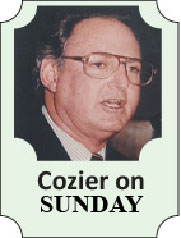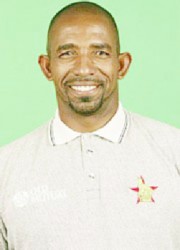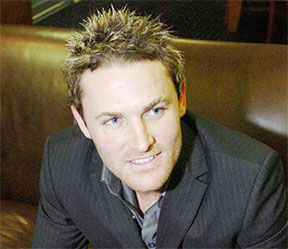AN article on the ESPNcricinfo website on Friday by Australian writer Daniel Brettig has triggered a few thoughts in relation to West Indies cricket, especially as it coincides with Phil Simmons’ installation as new head coach.
Primarily based on an interview with Aaron Finch, David Warner’s opening partner throughout Australia’s advance to the overnight World Cup final in Melbourne, Brettig put forward Darren Lehmann’s appointment as Australia’s coach as the principal reason for the dramatic transformation, within two years, of their performances in One-Day Internationals and, subsequently, Tests.
Although the rise of New Zealand, today’s other finalist, in a similar time frame was not part of Brettig’s critique, their imaginative captain Brendon McCullum, like Lehmann, has justifiably been accorded most of the credit.
 Given his success in his eight years in the position with Ireland, Simmons appears to have perfected his own style of coaching. He may be West Indian but, in his new post, he will confront the unique challenges and constraints of West Indies cricket as he guides the emerging, young players and the new, young ODI captain, in the coming three years of his contract.
Given his success in his eight years in the position with Ireland, Simmons appears to have perfected his own style of coaching. He may be West Indian but, in his new post, he will confront the unique challenges and constraints of West Indies cricket as he guides the emerging, young players and the new, young ODI captain, in the coming three years of his contract.
Even so, some of the points in Brettig’s piece might be instructive.
One way or the other, the successful methods of Simmons and Lehmann that benefitted Ireland and Australia need to be studied by coaches at all levels in the West Indies. Ditto for the various captains.
Brittig’s starting point was the 2013 Champions Trophy in England when Australia ended up bottom of their group after falling to England and Sri Lanka; a 3-0 defeat followed in the Ashes Test series. Heaped on top of an earlier 4-0 whitewash in Tests in India in February and March, it was hardly surprising that the team was “lacking sorely in any confidence to take the game on and, it was later to be revealed, (were) squabbling among themselves”. They are conditions with which the West Indies are all too familiar.
Repercussions were inevitable. Head coach Mickey Arthur, a South African, formerly coach of the Proteas, was replaced by Lehmann after the Champions Trophy. A left-hander who batted in the middle order in 27 Tests in the 1990s, he was an out-and-out Aussie to whom the players could more comfortably relate.

As he did with Queensland, he immediately set about instilling in his charges a more aggressive approach and a renewed belief in their own ability.

Finch, no more than a fringe ODI player at the time, believed his elevation to a more settled position came after a Twenty20 innings of 156 off 63 balls with 11 sixes against England at the tailend of the 2013 summer. It was an approach that fit Lehmann’s plan; it soon permeated the team.
“I think what’s important from the coach and the captain is you’ve got so much confidence in when you tell them how you think you’re playing and the strategy you’re going with, they back you 100 per cent,” Brettig quoted Finch on his relations with Lehmann and Michael Clarke. “That does give you a lot of confidence, because you know if you miss out a couple of times that you’re not just going to be moved to the side and, I suppose, go back to Shield (state) cricket to try and work your way back up.
“They have confidence in you and confidence in your game plan. You’ve seen that in the way Australia have played over the past two years,” he added. “It’s attacking, it’s taking the game on. When the game’s there to be won, it’s generally the team that attacks the most generally win.”
It’s not in the batting department alone. Finch’s reference to attack and “taking the game on” is reflected as well in the intimidating field placings Clarke affords his four fast bowlers (remember when the West Indies boasted the same?) and the sharp fielding.

The direct hits that ran out Ajay Jadeja and MS Dhoni in last Tuesday’s World Cup semi-final were reminiscent of Viv Richards’ hat-trick of Alan Turner and the Chappell brothers in the first Cup final in 1975.
McCullum’s similar approach as team leader has also been responsible for so quickly lifting New Zealand.
They were in such a state in the West Indies in 2012, they lost both Twenty20s, four of the five ODIs and both Tests. It led to the removal of Ross Taylor as captain in favour of McCullum. The effect has been increasingly evident, more especially throughout their World Cup campaign.
Nor were there sweeping changes of players in either case. Ten of the Australians in the 2015 World Cup were at the 2013 Champions Trophy; seven New Zealanders have survived since their thrashing in the Caribbean just under three years ago to take their places at the MCG overnight.
It was palpably caused by a difference in leadership and in mindset.
So why has there been no similar revival of West Indies’ fortunes? After all, no batsmen and no fast bowlers anywhere have ever had more belligerent intent than West Indians.
The short answer is that aggression on its own is not enough. It needs to be combined with the other aspects of the game – bowling, fielding, fitness, commitment, self-belief, team spirit, cricketing sense.
The greats have been those who combine them all, at the very least most of them. These have been thin on the ground for some time; that eight of those who so dominated New Zealand in 2012 were still at the World Cup three years on with no progress to show tells a story.
The challenge for Simmons is to create a change and replicate the magic achieved by Lehmann and McCullum.









